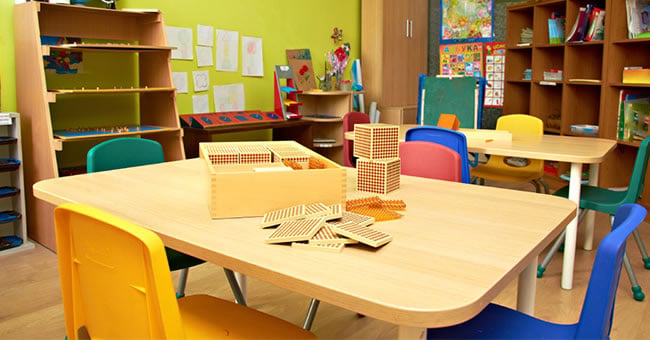
Your elementary classroom should facilitate your goal of making sure students are healthy, safe, engaged, supported, and challenged. A classroom layout that maximizes the use of your space and encourages learning can positively influence your learning environment, but creating an efficient classroom layout isn't easy. There are several factors you should consider as you plan the layout for your elementary classroom. You can use the following list to help you make a classroom layout that meets your teaching needs and creates a healthy learning environment for your students. Consider the following when planning your classroom:
1. The grade level(s) and subject(s) you are responsible for teaching
A teacher who teaches one subject to several different classes will want a different layout than a teacher who teaches several subjects to one class. If you teach kindergarten, keep in mind that your classroom layout should resemble more of a center-based preschool classroom than an elementary layout.
2. The size of your classroom
The size of the space you have to work with will be a big factor in how you plan your classroom layout. If you have a larger space, you'll have more room to accommodate students and the materials you need for your classroom. A smaller space requires much more purposeful planning that utilizes space by making classroom spaces as multi-purpose as possible.
3. The location of any permanent fixtures in the classroom
Be sure to take note of the location of any sinks, windows, cabinets, closets, or other permanent fixtures in your classroom. You can best utilize those fixtures by planning which parts of your classroom would most benefit from being located close to those fixtures. If you teach science, for example, it would be wise to place an indoor garden near windows where plants can receive natural light.
4. The number of students you'll be teaching
Your classroom layout is also dependent on how many students will be in your classroom at one time. Be sure to leave plenty of room for everyone to be comfortable. If you have limited space with a high number of students, try to find alternative ways to store materials and incorporate everything you need in the classroom.
5. Where your teacher workstation and conference table will be in the classroom
Decide where you want your teacher workstation to be located in the classroom - remember to leave room for the storage and organization tools you'll be using. It's also a good idea to put a conference table adjacent to your workstation. This area can be used for conferences with parents or to spend one-on-one time with students who need a little extra assistance in their schoolwork.
6. How you want to arrange students' desks
Depending on how many students you have and the size of the classroom, you can elect to group the desks together, put them in rows, or space them out in small groups. The ages of the children in your care will factor into this decision. Sitting in a group may be too distracting for some age groups.
7. Elements that should be included in all elementary classrooms
No matter what subjects you are responsible for teaching, your classroom should always incorporate reading, physical activity, and technology in some way. We suggest having a collection of books on hand for kids to read during free time or if they finish an assignment early. This can be a general collection of age-appropriate books or books that pertain specifically to what students are learning in class. Your classroom should also provide opportunities for children to use technology and be physically active.
8. The furniture and materials you'll need for every space in your classroom
Use furniture to enhance your learning environment. Well-placed furniture pieces can help you make the most of your classroom space by defining different sections of the classroom. Finding the right materials to help children learn will also influence your floorplan and overall classroom environment.
Finally:
After you've considered these factors and envisioned a basic classroom layout, you can use paper or a software program to officially create your classroom floorplan. Our Floorplanner tool is a great resource for educators looking for additional assistance in planning their classroom layout.
